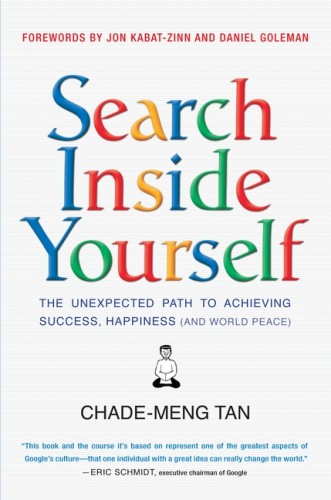 As I eye new developments like Google glasses, Google Drive, Google Car, I am fully aware of how much Google permeates my life between my phone, email, docs, maps, reader and more.
As much as Google makes me a little anxious (Why do my search habits follow me around? Will the company suddenly start charging for currently free products?) despite its “Don’t be evil” mantra, its inner-workings intrigue me as much or more as Apple entrances others.
As I eye new developments like Google glasses, Google Drive, Google Car, I am fully aware of how much Google permeates my life between my phone, email, docs, maps, reader and more.
As much as Google makes me a little anxious (Why do my search habits follow me around? Will the company suddenly start charging for currently free products?) despite its “Don’t be evil” mantra, its inner-workings intrigue me as much or more as Apple entrances others.
A new piece from the New York Times offers some of those inner workings, focusing on how some employees deal with the stress of working at the company.
Little wonder, then, that among the hundreds of free classes that Google offers to employees here, one of the most popular is called S.I.Y., for “Search Inside Yourself.” It is the brainchild of Chade-Meng Tan, 41, a tall, thin, soft-spoken engineer who arrived at Google in 2000 as Employee No. 107.
Think of S.I.Y. as the Zen of Google. Mr. Tan dreamed up the course and refined it with the help of nine experts in the use of mindfulness at work. And in a time when Google has come under new scrutiny from European and United States regulators over privacy and other issues, a class in mindfulness might be a very good thing.
The class has three steps: attention training, self-knowledge and self-mastery, and the creation of useful mental habits.
If it sounds a bit touchy-feely, consider this: More than 1,000 Google employees have taken the class, and there’s a waiting list of 30 when it’s offered, four times a year. The class accepts 60 people and runs seven weeks.
The Zen of Google, huh? Are there religious underpinnings here?
But what is Mr. Tan’s ultimate goal? A Buddhist for many years, he says without irony that he wants to create world peace. “I was always very different from the other kids,” he says. “I have an I.Q. of 156. I didn’t play sports. I thought big. I thought I could achieve great things. I don’t want to sound megalomaniac, but my whole life is about doing something for the world, from as far back as I can remember.”
Ah ha. There it is. The reporter discovers that Mr. Tan is Buddhist, but the story does little to explain whether the course has Buddhist ideas or even Buddhist motivations behind his desire to spread his thinking.
Born and raised in Singapore, Mr. Tan describes his childhood as “very unhappy.”
“It was the geek thing,” he says. He taught himself how to write software code at the age of 12. And by 15, he had won his first national academic award. At 17, he was one of four members of the national software championship team.
“In Singapore, the way to distinguish yourself is to win competitions,” he says. But public attention and external rewards brought him no satisfaction. “It wasn’t making a difference,” he says. “I wasn’t any happier. There was a compulsion to be the best.”
So was the turning point happen when he became Buddhist? When did that come in? There's one other brief mention of faith in the story.
Mr. Tan likes to refer to the example of Matthieu Ricard, a Buddhist monk once described by a British newspaper as the happiest person in the world. At first, that rang hollow to Mr. Chang. “Matthieu’s a monk; I don’t want to be a monk,” he says. “But Meng was able to make that bridge for me. He presented S.I.Y. the way we all present to one another: here’s my premise, here’s my control, here’s my experiment.”
There isn't necessarily an obvious religion angle here, but it could use just a little more detail in the same way that it explains Mr. Tan's upbringing and eventual employment at Google. Without more, the mention of his faith is like describing his height or the kind of car he drives, color for the story with little connection to the main point of the piece.
Please excuse me while I go sit quietly for long, unproductive minutes. Because Google tells me so.
